
Friday, 04/07/2025 09:11
(GMT+7)
Sacred Con Son ancient pagoda
HNN.VN - In 2012, I first visited Chi Linh - Hai Duong and toured Con Son pagoda. Having had the opportunity to visit and worship at many pagodas across Vietnam, Con Son pagoda left a deep impression on me from the very first glance, due to its scenery, its ancient charm, and an unexplainable sense of sacred understanding. Returning in 2025, that feeling remains as intact as the first time. I respectfully share with readers some photos of this ancient pagoda, which is over 700 years old. And if you have the chance, let you visit once to admire and contemplate.
Con Son pagoda is located in Chi Linh - Hai Duong (now Hai Phong). Initially named Ky Lan, it was just a small pagoda built by Buddhist monk Phap Loa, the second patriarch of the Truc Lam Zen sect, in the year Hung Long the 12th (1304). By the first year of Khai Huu (1329), the pagoda was expanded and renamed Con Son Thien Tu Phuc pagoda, and was assigned to Buddhist monk Huyen Quang (a disciple of Phap Loa, and the third patriarch of the Truc Lam Zen sect) as its abbot. From the Tran Dynasty, Con Son pagoda, along with Yen Tu and Quynh Lam (Quang Ninh), was one of the three centers of the Truc Lam Zen sect. “Con Son, Yen Tu, Quynh Lam / If one hasn't visited, their Zen heart isn't satisfied.”
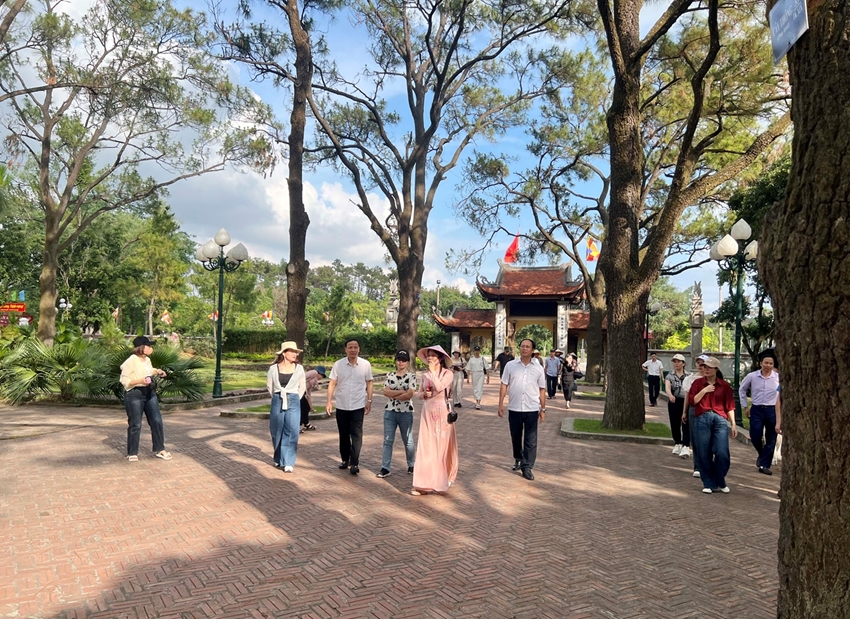 |
After passing through the Tam quan (three entrance gate), visitors will immediately encounter two rows of ancient pine trees, of centuries old, leading to the pagoda. |
 |
| The Thanh Hu Dong stele, located to the right of the pagoda courtyard, is a unique artifact, preserving the royal writing of King Tran Due Tong. The stele is considered to have immense historical and calligraphic value, bearing the strong cultural imprints of the Tran Dynasty; it was recognized as a National Treasure in 2015. |
 |
| The “Con Son Tu Phuc pagoda stele” was erected in the year Hoang Dinh the 8th (1608) during the reign of King Le Kinh Tong. The stele is carved from green stone in a hexagonal shape, with 6 roofs and a pointed top. It stands 1.2m tall, with each face 0.32m wide, and its content records the pagoda's renovation in 1607 initiated by the abbot, Mai Tri Ban. On February 15, 1965, President Ho Chi Minh visited Con Son, read and explained the content of the “Con Son Tu Phuc pagoda” stele to his companions. The photograph of Uncle Ho reading the Con Son pagoda stele has become one of the cultural symbols of the era. In 2017, the stele was recognized as a National Treasure. |
 |
| Visitors were listening to explanations about the Con Son pagoda stele. |
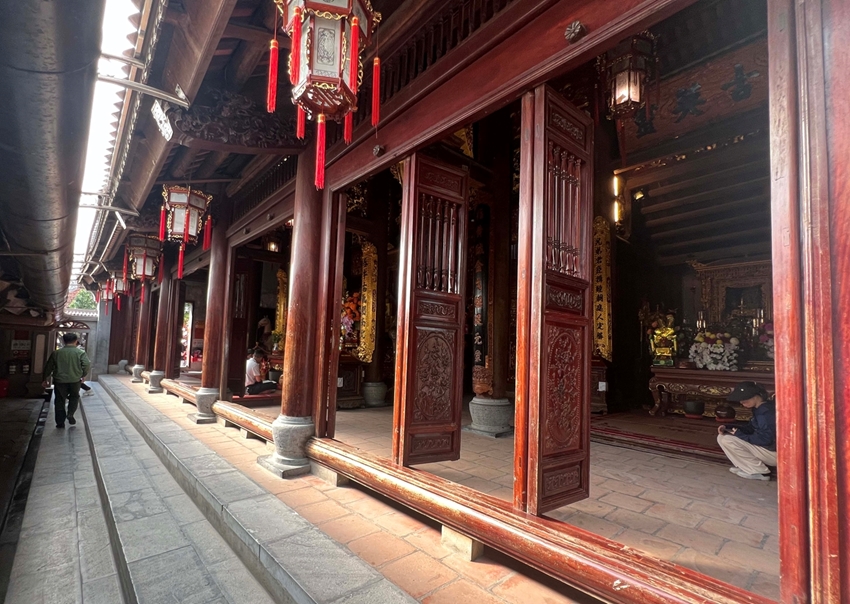 |
| The door system of the main hall. |
 |
| A very large set of Three Worlds Buddhas statues, made of jackfruit wood, dating from the 17th century, are being worshipped in the Tam Bao section of the main hall |
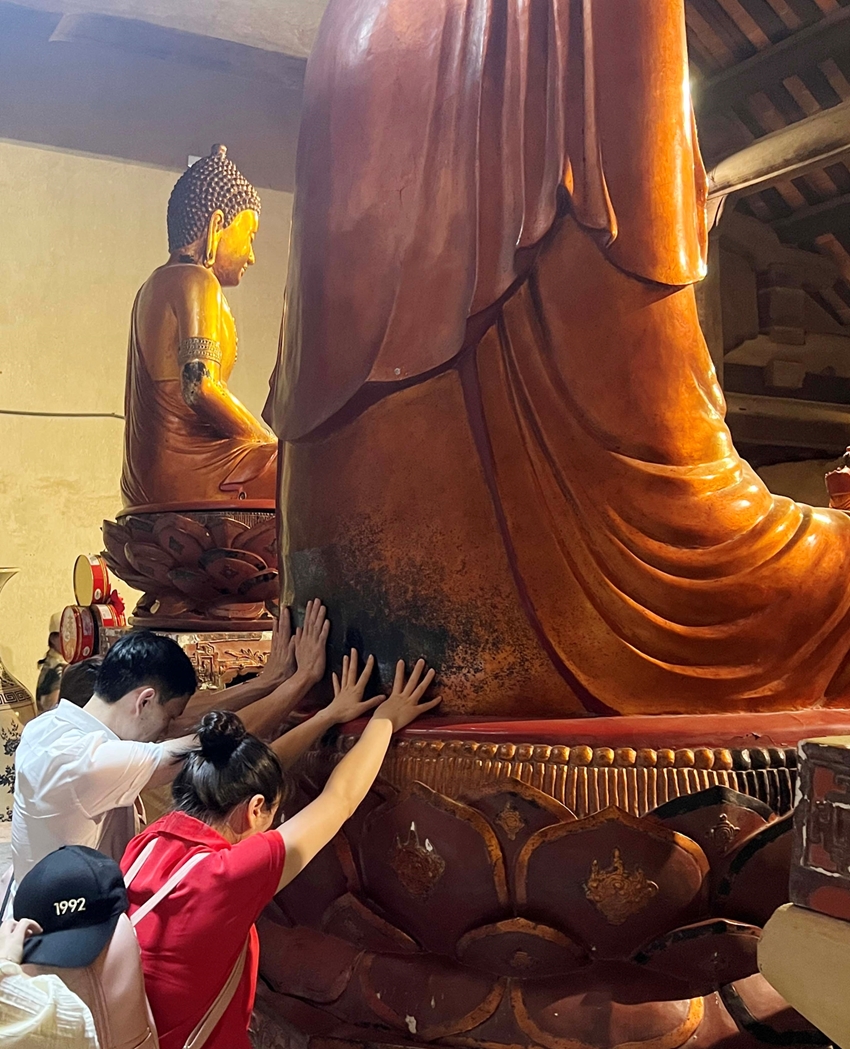 |
| According to belief, visitors often place their hands on the back of the statue to pray, and then place their hands on their own heads to wish for peace and health. |
 |
| Hundreds of years old frangipani trees in the pagoda courtyard. |
 |
| Traces of an ancient structure in front of the Cuu Pham Lien Hoa (nine-story lotus) tower. |
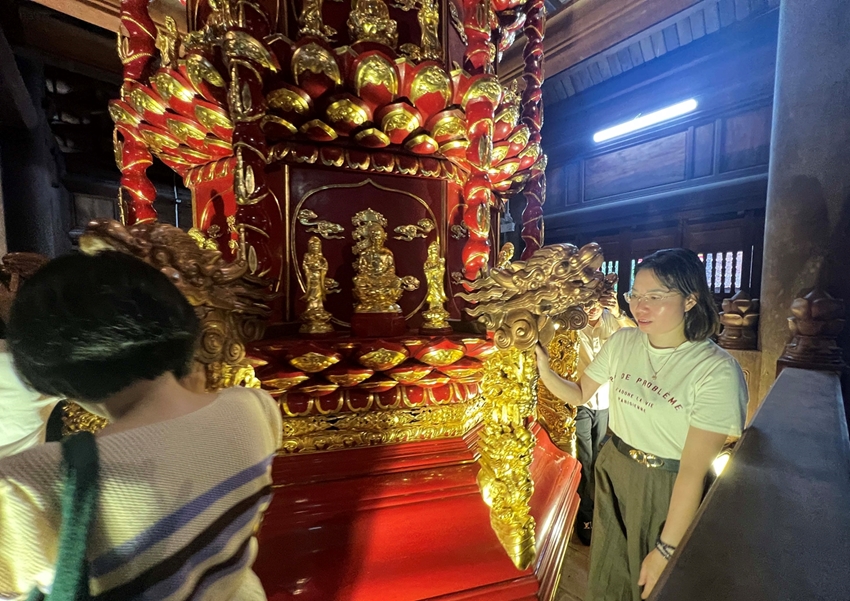 |
| Buddhists and visitors rotated the Cuu Pham Lien Hoa (nine-story lotus) tower, reciting the name of Amitabha Buddha to pray for national peace and prosperity, and constant peace of mind. |
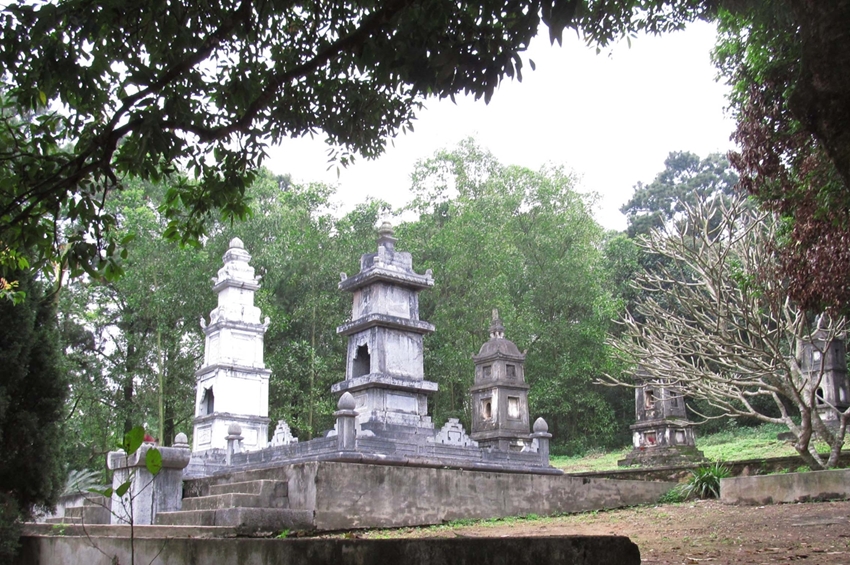 |
| The stupa garden, where the sariras of the patriarchs are preserved, is behind the pagoda |
 |
| Ngoc (Pearl) well with its pure and sacred water. Everyone who visits Con Son ancient pagoda asks to drink a sip of this sacred water to pray for health and peace. |
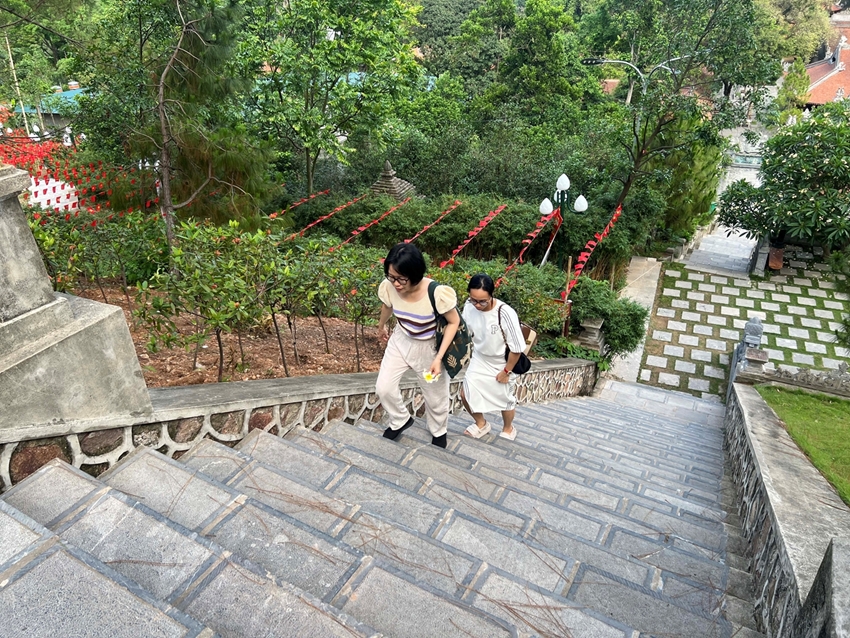 |
| The path up to Thanh Hu cave |
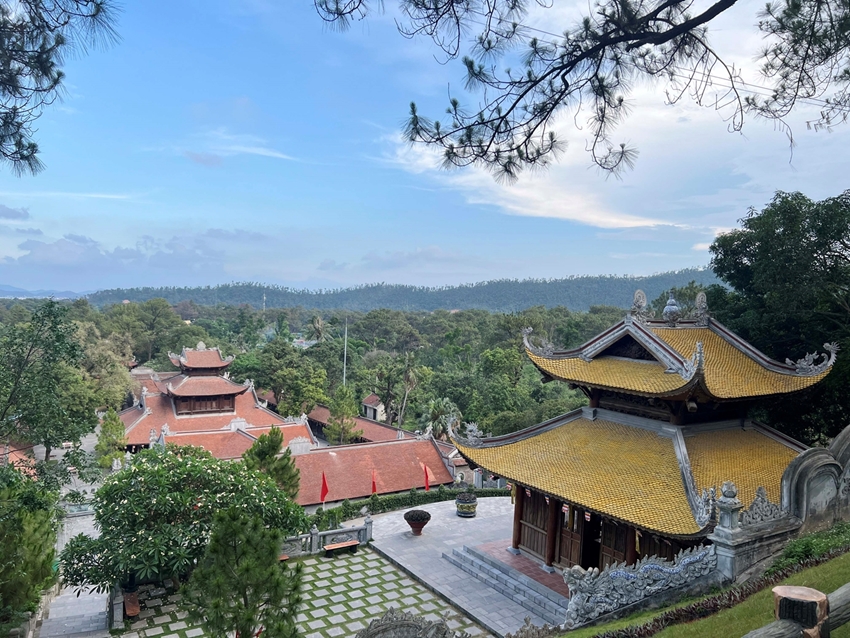 |
| A panoramic view of Con Son ancient pagoda as seen from above. |
By Hien An